SUSE Rancher and Hammerspace
SUSE One Partner, Hammerspace, now has an offering live in the SUSE Rancher Apps and Marketplace and we’ve invited Hammerspace to author a guest blog so you can learn more about their data orchestration platform. ~ Bret
Simplify and accelerate the delivery of applications and data
Guest Blog Author: Johan Ballin, Director of Technical Marketing, Hammerspace
Introduction
Kubernetes has freed applications from the limitations of underlying server technologies, starting a revolution in the way applications are created, tested, and delivered to end-users. Kubernetes accelerates the production pipeline drastically improving time to market and is the perfect fit for a world increasingly dependent on agile development. Consequently, these higher demands are also putting pressure on IT departments to adopt similarly agile operating procedures. This marriage of agile development practices and IT operations is aptly named DevOps. If you are familiar with David Kim’s book, The Phoenix Project, you are already aware that DevOps is the adoption of Kanban process engineering practices, a key part of agile software development. DevOps shifts the primary focus away from managing the minutiae of technology towards managing optimal business outcomes, such as a smoothly running CI/CD pipeline. The outcome is higher efficiency, productivity and profitability.
Storageless Data
Hammerspace is the world’s first storageless data solution. The architecture is an abstraction from infrastructure that provides a more powerful and scalable way of managing data across any infrastructure and delivering data services with multiprotocol access to users at any location. The Hammerspace data orchestration platform delivers storageless data for the automated deployment, scaling, management, and declarative control of data across disparate storage systems on any infrastructure.
Use Helm to Provision Storage
Helm makes provisioning Hammerspace storage for SUSE Rancher an easy and straightforward task. It reduces complexity and removes error-prone manual configuration steps through automation. All you have to do is go to SUSE Rancher Apps & Marketplace and locate the Helm Chart for Hammerspace CSI, as shown in the image below.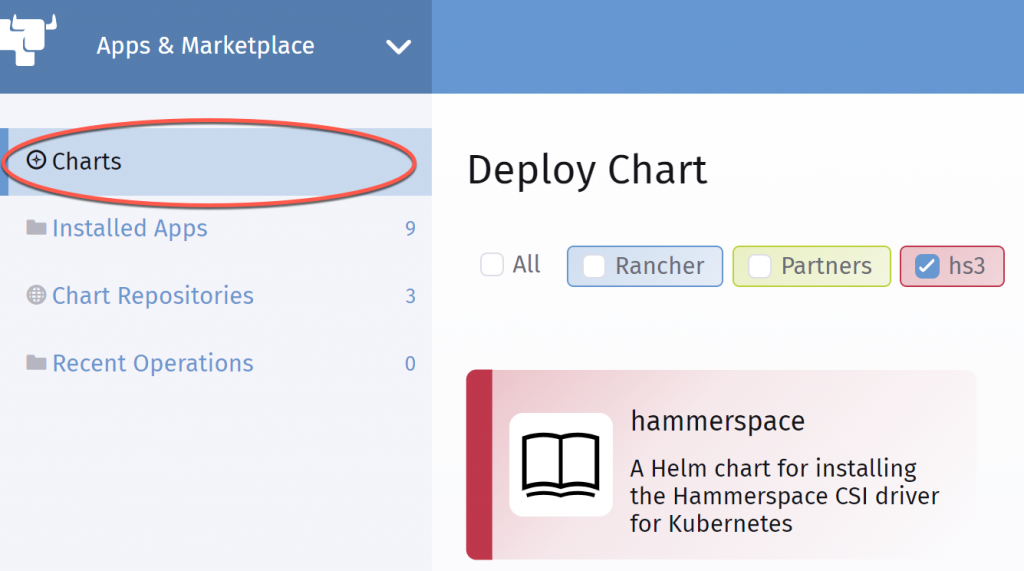
Hammerspace CSI Driver
The Hammerspace Container Storage Interface (CSI) driver supports block, file, and shared storage. By offering three different ways of provisioning storage, virtually any use case or application is covered. There are some important distinctions between the three options. Block persistent volumes can be shared between pods, while a file-backed persistent volume provides a local, non-sharable file system. A shared persistent volume is an NFS interface that allows pods to actively share file data, both locally and globally. Block and shared volumes can be shared across any number of pods across any distance on any infrastructure, whether on-premises or in the cloud. The following image is a good illustration of the Hammerspace CSI driver architecture and the completeness of what it offers.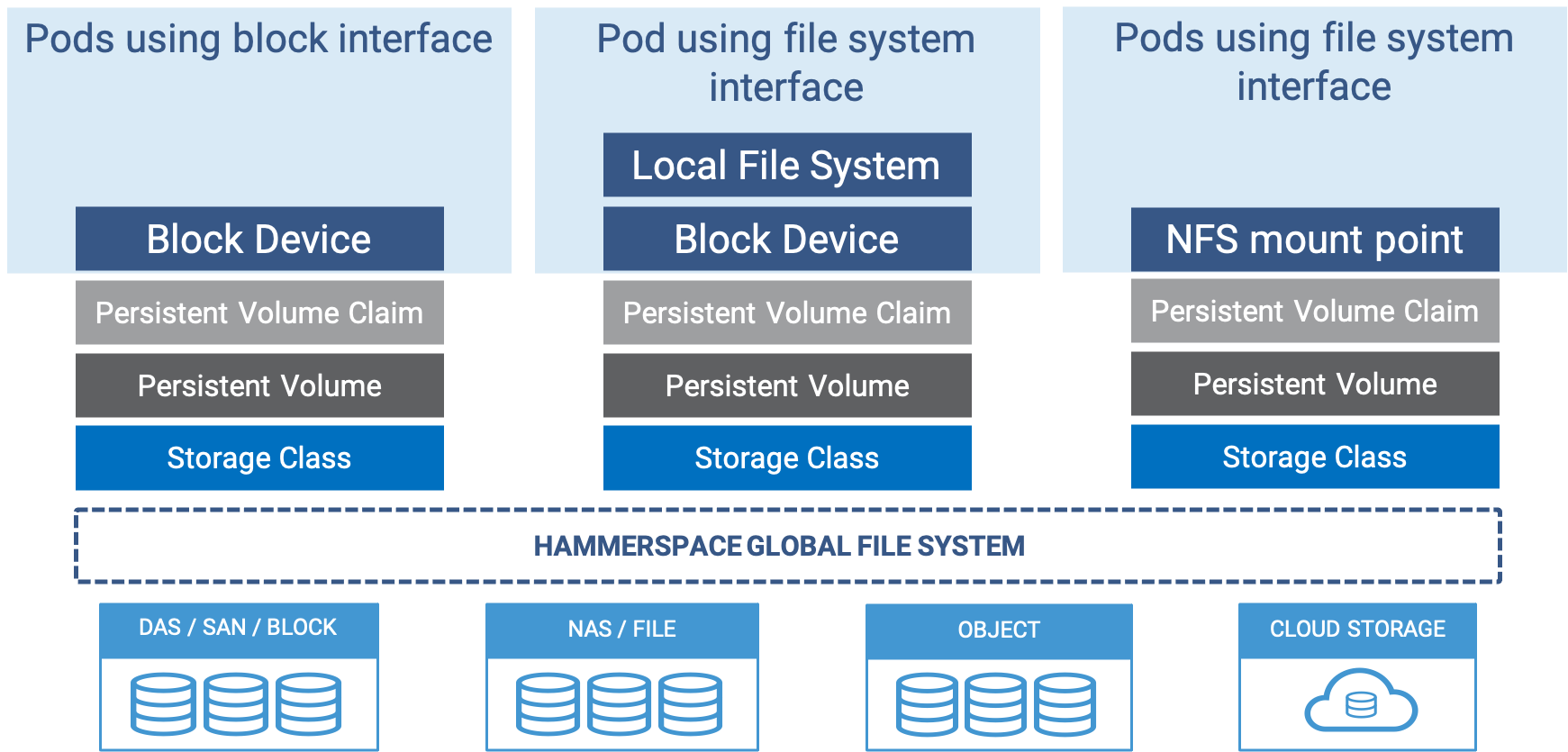
Hammerspace Installation with Helm
The Helm Chart also contains a README listing prerequisites and detailed descriptions of the three different ways you can provision storage for a SUSE Rancher cluster.
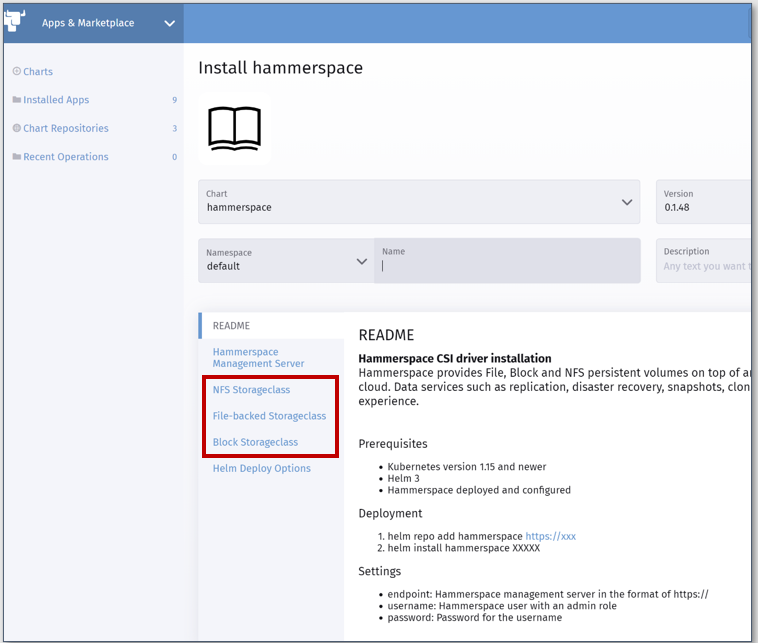
Block Storageclass
The Helm Chart puts great powers in your hands to control exactly how storage is provisioned. You have full control over things such as export options, volume expansion, as well as declarative policy control over data placement, geolocation, protection, and virtually anything imaginable. You can, of course, accept the default settings to make it super simple. Block storage is ideal for SQL databases or other applications that require a simple block interface.
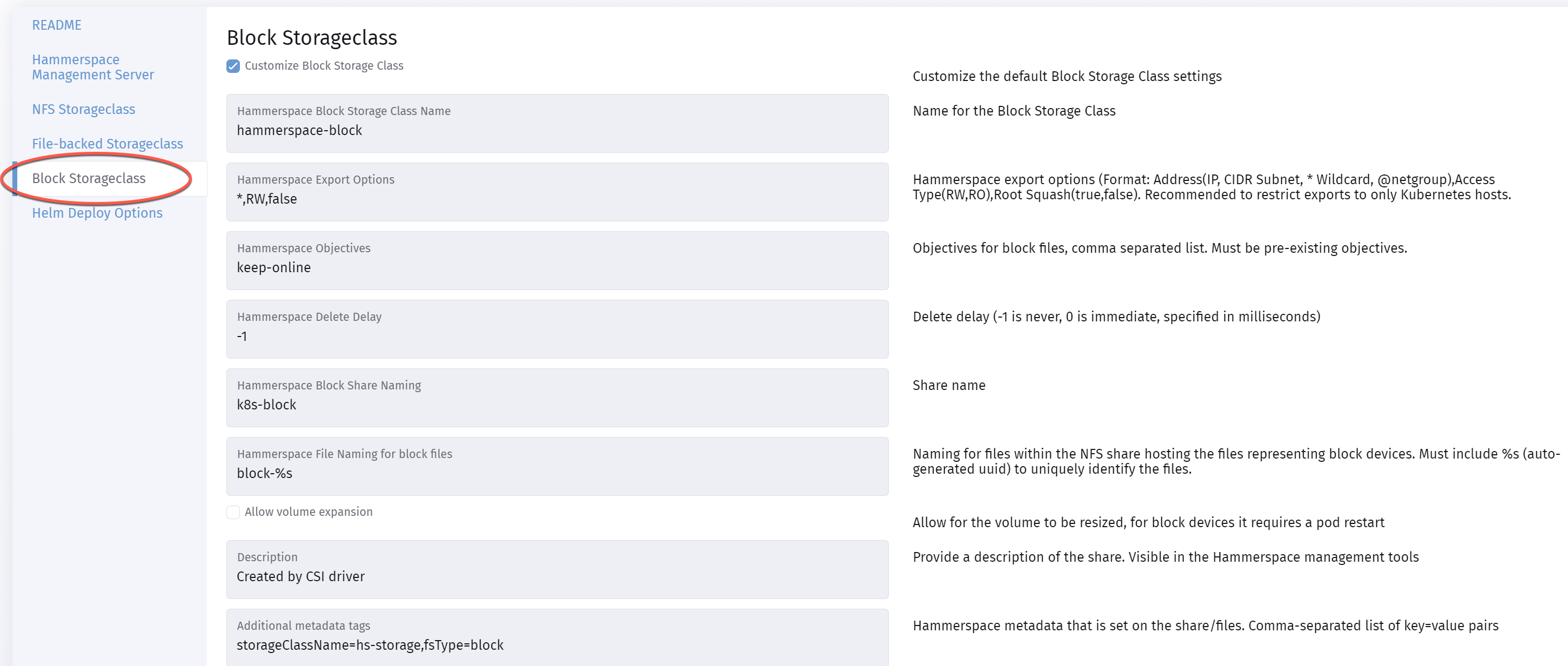
File-backed Storageclass
There are multiple potential use cases for file-backed storage. NoSQL databases, such as MongoDB, that leverages its own replication mechanism for distributing data is a good example. MongoDB provides its own linear scalability which also limits the need for external scale-out storage.

NFS Storageclass
NFS shared storage is, of course, the ideal choice for SUSE Rancher Pods that need to share file storage without the pain, configuration complexity, and data-copy sprawl of replication. Why replicate data between volumes and layers when NFS solved that problem decades ago?

Summary
Rancher and Hammerspace, together, vastly simplify and accelerate the delivery of applications and data. The declarative nature of the solution is a truly powerful and innovative approach making applications and data always available, highly responsive, and globally portable. This is the optimal solution for CI/CD workflows.
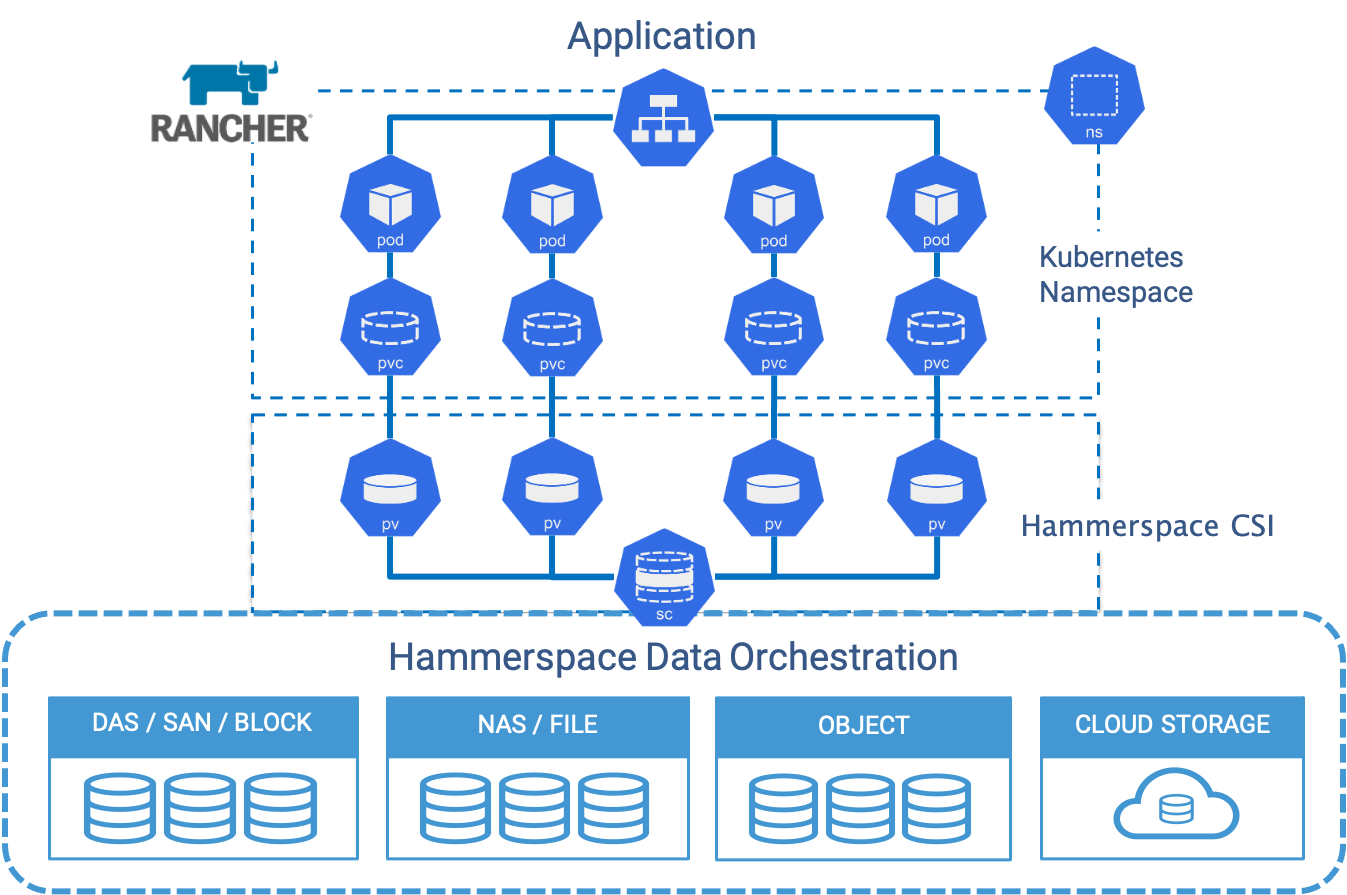
Hammerspace reduces configuration complexity without losing the granular controls that administrators require. Hammerspace Objectives are a simple and easy way to declare the intent of data or, in other words, tell the system what you want. You should expect nothing less of modern data services. This is distinctly different from aging storage paradigms that require administrators to tell a storage system not only what, but also spell out in painstaking detail how it must be done. Declarative controls empower administrators to accomplish more with less. Smart and well-designed software knows how to accomplish a declared intent. Hammerspace and SUSE Rancher together deliver agility and performance to both applications and data. Please note, Hammerspace fully supports both a SUSE-supported Rancher instance as well as an open source project Rancher deployment.
https://hammerspace.com/solutions/
https://hammerspace.com/resources/
 Johan Ballin, Director of Technical Marketing, is a passionate technology evangelist. Johan has over 25 years of industry experience spanning big data management and analytics, distributed systems, storage, databases, and information security. His enthusiasm is in finding those points where technology and humanity converge; creating moments of inspiration that drive us all towards greater levels of engagement.
Johan Ballin, Director of Technical Marketing, is a passionate technology evangelist. Johan has over 25 years of industry experience spanning big data management and analytics, distributed systems, storage, databases, and information security. His enthusiasm is in finding those points where technology and humanity converge; creating moments of inspiration that drive us all towards greater levels of engagement.
Related Articles
Feb 06th, 2023
SUSE’s Rachel Cassidy Honored as a 2023 CRN Channel Chief
Jul 06th, 2022